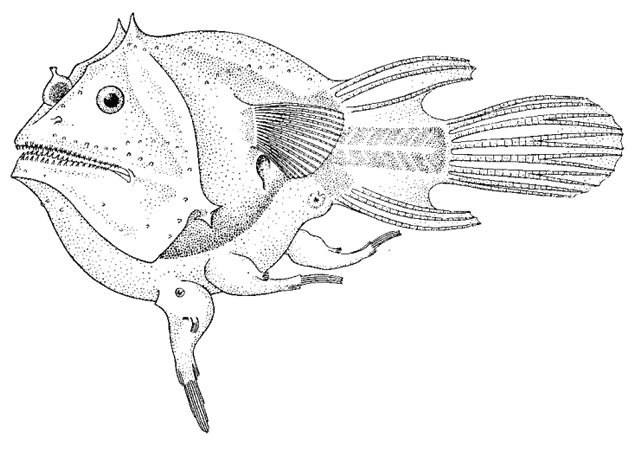| Linophrynidae (Leftvents) |
| 15.9 cm SL (male/unsexed) |
|
bathypelagic; marine; depth range - 2250 m, oceanodromous |
| Tropical and subtropical parts of all oceans. Four specimens are known from off Madeira. |
|
Dorsal spines (total): 0-0; Dorsal soft rays (total): 3-3; Anal spines: 0-0; Anal soft rays: 3-3. Mature females are unpigmented and have a nearly rounded shape of body. There are spines above the eyes and behind the mouth. The illicium consists of a rounded flap without pole. Small numerous teeth in both jaws (Ref. 557). Free lining males are characterized by: having weak sphenotic spines, nearly absent; slender and angled preopercle; moderately elevated epiotic region of skull; well developed premaxillae; 20-24 teeth on each side of upper and lower jaws (Ref. 86949). |
| Also mesopelagic (Ref. 7300). A small deep-sea angler fish. Males dwarfed, becoming parasitic on females (Ref. 10762). An 8 cm female was found with 3 parasitic males of 18 mm length, attached to her ventral side. Adult (=parasitic) males are colorless with reduced teeth, jaws, and eyes. Information on the maximum length of female was taken from Ref. 10762. |
|
Least Concern (LC); Date assessed: 15 July 2014 Ref. (130435)
|
| harmless |
Source and more info: www.fishbase.org. For personal, classroom, and other internal use only. Not for publication.

